TechnoKontrol SAR
Search & Rescue Services
Elite Black Night Viper Search & Rescue Special Services
SAR-Search & Rescue Maritime Services
Search and rescue (SAR or S&R) is the search for and provision of aid to people who are in distress or imminent danger.
The general field of search and rescue includes many specialty sub-fields, typically determined by the type of terrain the search is conducted over.
These include mountain rescue; ground search and rescue, including the use of search and rescue dogs; urban search and rescue in cities; combat search and rescue on the battlefield and air-sea rescue over water.

Types of Search and Rescue
Search & Rescue Maritime Services
All types or naval, maritime, fluvial operations or activities including fishing, sport sailing, logistical, cargo shipping, sea-river services as oil tankers bunkering, merchant shipping, military vessels patrols, maritime border control, anti-piracy law enforcement operations can all be dangerous activities that involve an extremely high level of risk at any level and in any moment.
The Search and Rescue (SAR) system quickly becomes the primary safety net for all of these sectors and person involved directly or indirectly in these activities.
When dealing with emergencies, vessel-shipping operators, should understand three important components of the SAR system: alerting, detection and response.

Alerting
The alerting stage represents a significant level of urgency for SAR providers and carries with it a well-structured course of action(s) designed to bring a marine incident to a successful conclusion.

All shipping vessels should be aware of the key elements of the SAR alerting system and know how to activate it for a quick response.

Joint Rescue Coordination Centers (JRCCs) and Maritime Rescue Sub-Centers (MRSCs) that provide search and rescue operations 24 hours a day, 365 days of the year in support of maritime activity in any nations waters is a must;
- International SAR agreements and conventions ensure a SAR alerting infrastructure is available for all mariners worldwide;
- The telephone system (terrestrial or satellite) for any type of alerting, should have telephone numbers of JRCC/MRSCs for their area conveniently posted for easy access in case of emergencies;
- Network of Marine Communications & Traffic Services (MCTS) centers operated by the CCG monitors for distress alerting and provides a communications link between emergencies at sea and the JRCC/MRSCs;
- MCTS centers provide a radio station listening watch on very high frequency (VHF) channel 16 (156.8 MHz) and medium frequency (MF) 2182 kHz, 24 hours a day, 365 days a year;
- MCTS centers provide mariners with important safety services, including medical advice, weather updates, ice information, notices to Shipping and other information that can be critical in preventing marine incidents and resolving marine emergencies;
- The Global Maritime Distress and Safety System (GMDSS) a VHF Digital Selective Calling (DSC) service on VHF channel 70 has been fully operational and monitoring for VHF/DSC distress alerting is maintained at most centers where A1 Sea Areas apply. All nations Coast Guard wishes to remind operators of the importance to register new VHF/DSC radio equipment and to inform of any and of all modifications concerning the related coordinates when registering VHF/DSC radio equipment;
- Additional MCTS services, including radar monitoring, are available in selected areas where Vessel Traffic Services (VTS) zones are established. In these areas, communications are maintained on designated VHF sector frequencies specific to each area where VTS zones are located; and,
- Star (*) 16 exists through the cellular telephone system at certain MCTS centers for Maritime SAR alerting only. Where this feature is not provided by the local cellular telephone company, the SAR system can be reached using a cellular phone by dialing directly to MRSC or the MCTS centre in the area of operation.

Direction Finding (DF)
Some MCTS centers across the World are equipped with Direction Finding (DF) capabilities. The primary function of DF is to provide assistance to vessels in distress or other emergency situations.
Vessels should be aware that this is not a navigation service, but rather an aid for detecting location by providing a line of bearing from the DF site. It can also confirm a line of bearing for vessels that are uncertain of their location. MCTS centers will, on request, transmit signals on a frequency that will enable fish harvesters to take a bearing from their own DF.

EPIRBs
EPIRBs can serve a dual function of alerting and detection. Once an EPIRB is activated (automatically or manually), the battery-powered source allows the EPIRB to continue to transmit for up to 48 hours.


An interface feature with a built-in GPS system on new generation EPIRBs provides an automatic fixing in latitude and longitude. With or without this feature, there is a continuous transmission of coded signals that allows the SARSAT system to fix positions and obtain information through the unique identification number. A properly registered EPIRB will assist SAR in identifying the vessel and owner.
Search and Rescue Radar Transponder (SART)
Search and Rescue Transponders (SARTs) are designed to help locate vessels in distress or survivors in a life raft. They can be detected by radars carried onboard most vessels. SAR and multi-purpose aircrafts are usually equipped with radar to detect SARTs as a function of their response capability.

Radar Reflectors

Radar reflectors should be properly placed clear of obstruction and as high as possible onboard a vessel. This provides additional assurance of detection during times of poor visibility and darkness when radar searches are sometimes the only option available to SAR providers.
Visual Detection
Visual detection is ultimately the last step in the process of response before rescue or any type of assistance is provided.

There are steps you can take to prepare for visual detection during an emergency situation:
- Vessels, whether open or closed construction, should be painted in a color that produces maximum optical detection in the working environment;
- Flares should be carried and used in a prescribed manner. Sailors may need to activate a flare(s) to signal to a SAR resource when it arrives in the immediate vicinity of a distress vessel;
- Work and/or protective clothing should be in colors easily seen in the marine environment; and,
- A life jacket should be worn at all times when operating in open or exposed areas on a vessel.

While survival equipment has the primary function of providing buoyancy, its colors make an excellent target for detection in the event of a rescue operation. Fish harvesters should wear protective clothing, such as rain gear, that reflects colors that are easy to detect, such as yellow or orange. Black and other dark colors blend in with surrounding environment. Similarly, all maritime & river vessels should be a color that will assist with detection in emergency situations.

Response Infrastructure
Implementation of International Conventions, International Joint Agreements and domestic legislation provide protection for all mariners who find themselves in danger at sea. It is mandatory for a vessel to respond to a distress situation and failure to do so, without just cause, has legal consequences.

SAR Resources
The use of SAR resources involves many considerations relating to the level of the emergency unfolding at any given time. Primary SAR vessels and aircraft are specifically designed, equipped and crewed for SAR purposes as the “Technokontrol-Maritime King Shark Model III & XI and the Technokontrol Aviation-“Amphibious Eagle Eyes III” whom are both long range, especially designed and made, extremely well equipped for SAR based operational platforms.

These resources are strategically located and positioned in areas where activity is highest. A pre-determined response capability makes these resources available the moment an alert is received.

JRCC/MRSCs
The rescue coordinator at each JRCC/MRSC assesses all alert situations for an appropriate response. All SAR operations, including search planning, resource tasking and rescue coordination are conducted under the authority of the rescue coordinator who assumes the role of the Search Mission Coordinator (SMC).

The JRCC or MRSC that will be assuming SMC responsibilities will be determined by the area of responsibility assigned to that centre. Vessels can activate the SAR system at any level and do not have to be preoccupied with determining which centre they should alert for assistance.

Response Types
Response to alerts may come from many areas of the marine community.
The type of response could range from a dedicated SAR resource to a private vessel operating a close distance to the vessel in distress.

The degree of urgency, the type of emergency, the availability of resources, and the location are all key elements that determine the type of response in a given situation. Some of the most common alerts received are:
- Vessels taking on water, on fire, or running aground and with hull damage;
- Medical emergencies;
- Person in the water;
- Failure to arrive at intended destinations, return to port on time, or generally considered overdue; and,
- Other urgent situations, but often preventable including disorientation, mechanical failure, steering problems, and fuel shortages.

Distress Response
Distress alerts command the highest degree of urgency in the maritime community and warrant the greatest level of response. For the most part, response to such situations is spontaneous and based on a long-standing system of tradition, conventions, agreements and moral and legal obligations.

Response is often well underway before the alert is received at the JRCC/MRSC. Mariners, knowing their responsibility and having the means to carry it out, often proceed to assist in an appropriate manner.

MCTS centers enhance the response with communications and traffic systems capabilities. "Mayday relay" broadcasts through the Coast Guard radio, NAVTEX broadcasts and Enhanced Group Calling (EGC) through the Inmarsat C satellite system help to broaden the response network
 .
.
Mountain SAR-Search & Rescue
Mountain SAR Search & Rescue refers to search and rescue activities that occur in a mountainous environment, although the term is sometimes also used to apply to search and rescue in other wilderness environments. The difficult and remote nature of the terrain in which mountain rescue often occurs has resulted in the development of a number of specific pieces of equipment and techniques.

Helicopters are often used to quickly extract casualties, and search dogs may be used to locate them.

Mountain rescue services may be paid professionals or volunteer professionals. Paid rescue services are more likely to exist in places with a high demand such as the Alps, national parks with mountain terrain and many ski resorts.

However, the labor-intensive and occasional nature of mountain rescue, along with the specific techniques and local knowledge required for some environments, means that mountain rescue is often undertaken by voluntary teams.

Ground Search and Rescue
Ground search and rescue is the search for persons who are lost or in distress on land or inland waterways.

Traditionally associated with wilderness zones, ground search and rescue services are increasingly required in urban and suburban areas to locate persons with Alzheimer's disease, autism, dementia, or other conditions that lead to wandering behavior.

Ground search and rescue missions that occur in urban areas should not be confused with "Urban SAR", which in many jurisdictions refers to the location and extraction of people from collapsed buildings or other entrapments.

Search and Rescue Dogs
The use of dogs in search and rescue (SAR) is a valuable component in wilderness tracking, natural disasters, mass casualty events, and in locating missing people. Dedicated handlers and well-trained dogs are required for the use of dogs to be effective in search efforts. Search and rescue dogs are typically worked by a small team on foot, but can be worked from horseback.

Search and rescue dogs detect human scent. Although the exact processes are still researched, it may include skin grafts (scent-carrying skin cells that drop off living humans at a rate of about 40,000 cells per minute), evaporated perspiration, respiratory gases, or decomposition gases released by bacterial action on human skin or tissues.
Types of Search & Rescue Dogs
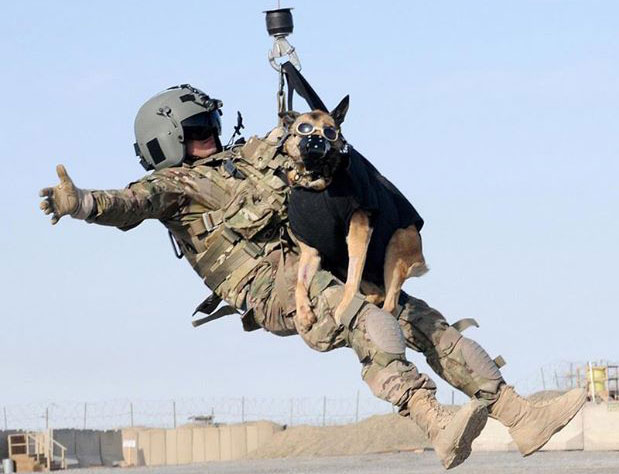
From their training and experience, search and rescue dogs can be classified broadly as either air scenting dogs or trailing (and tracking) dogs. They also can be classified according to whether they scent discriminate, and under what conditions they can work. Scent discriminating dogs have proven their ability to alert only on the scent of an individual person, after being given a sample of that person's scent. Non-scent discriminating dogs alert on or follow any scent of a given type, such as any human scent or any cadaver scent. SAR dogs can be trained specifically for rubble searches, for water searches, and for avalanche searches

Search & Rescue Dog Air Scenting
Air scenting dogs primarily use airborne human scent to home in on subjects, wereas trailing dogs rely on scent of the specific subject. Air scenting dogs typically work hoff-lead, are non-scent-discriminating and cover large areas of terrain.
These dogs are trained to follow diffused or wind-borne scent back to its source, then to indicate their find (for example, by sitting with the lost party and barking until the handler arrives, or by returning to the handler and indicating contact with the subject, and then lead the handler back to the subject). Handler technique, terrain, environment (vegetation), and atmospheric conditions (wind speed and direction, temperature, humidity, and sky conditions) determine the area covered by air scenting dogs, although a typical search area may be 40–160 acres and scent sources can be detected from a distance of 1/4 mile or more.

SAR DogTracking
Tracking dogs will typically work on lead and will mostly have their nose to the track following ground disturbance. A good tracking dog will be able to work through a variety of terrain as well as successfully maneuver turns and "double backs" that a subject might take.

SAR Dog Trailing
A trailing dog is scent specific, can also have his/her head up using some of the air scent techniques to find the subject. Trailing dogs will work on and off lead, and trailing dogs will venture off the actual path that a subject took should a scent pool be discovered. This is not to be considered an error by the dog, as they are following a specific scent and working through all other human scents to get to the source.

SAR Variations
In addition to these types of dogs, some teams cross train dogs in both trailing and air scenting and use them as scent specific "area searches". Typically these dogs are worked in an area that an air scent dog would work, but are capable of ignoring other search teams and other people in or near the assigned search area. When deployed this way, these air scenting dogs require a scent article as does a trailing dog.
Applications
Specific applications for SAR dogs include wilderness, disaster, cadaver, avalanche, and drowning search and rescue or recovery.
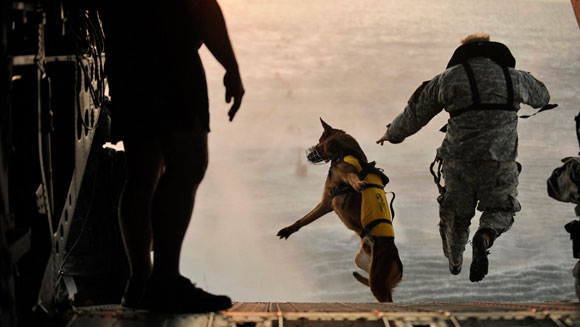
In wilderness SAR applications, air scenting dogs can be deployed to high-probability areas (places where the subject may be or where the subject's scent may collect, such as in drainages in the early morning) whereas tracking/trailing dogs can be deployed from the subject's last known point (LKP) or the site of a discovered clue. Handlers must be capable of bush navigation, wilderness survival techniques, and be self-sufficient. The dogs must be capable of working for 4–8 hours without distraction

Disaster dogs are used to locate victims of catastrophic e.g., by wildlife). or mass-casualty events Many disaster dogs in are trained to meet the Emergency Management Agency K9 standards for domestic or international deployment; advanced agility and off-lead training are prerequisites reflecting the nature of these dogs' application. Disaster dogs rely primarily on air scent, and may be limited in mass-casualty events by their inability to differentiate between survivors and recently deceased victims.
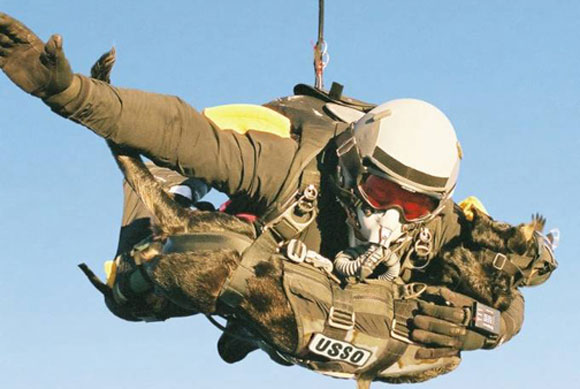
Human Remains Detection (HRD) or cadaver dogs are used to locate the remains of deceased victims. Depending on the nature of the search, these dogs may work off-lead (e.g., to search a large area for buried remains) or on-lead (to recover clues from a crime scene). Air scenting and tracking/trailing dogs are often cross-trained as cadaver dogs, although the scent the dog detects is clearly of a different nature than that detected for live or recently deceased subjects.

Cadaver dogs can locate entire bodies (including those buried or submerged), decomposed bodies, body fragments (including blood, tissues, hair, and bones), or skeletal remains; the capability of the dog is dependent upon its training.

Urban Search and Rescue
Urban search and rescue (US&R or USAR), also referred to as Heavy Urban Search and Rescue (HUSAR), is the location and rescue of persons from collapsed buildings or other urban and industrial entrapments.

Due to the specialized nature of the work, most teams are multi-disciplinary and include personnel from police, fire and emergency medical services. Unlike traditional ground search and rescue workers, most US&R responders also have basic training in structural collapse and the dangers associated with live electrical wires, broken natural gas lines and other hazards.

Urban Search and Rescue involves the location, extrication, and initial medical stabilization of victims trapped in confined spaces due to natural disasters, structural collapse, transportation accidents, mines and collapsed trenches.

The causes of SAR incidents can be categorized as accidental and deliberate.

Structural collapse incidents can comprise unstable or collapsed structures in an unsafe position. Usually collapse incidents leave voids inside the debris that can result in numerous casualties trapped under large amounts of very heavy and often unstable debris.

SAR services can be faced with complex rescue operations within hazardous environment. Incidents experience shows that people are often found alive many hours and days after rescue operations commence, and the corresponding services should be planned accordingly.

SAR teams in different countries may be organized in a variety of ways, but they are often associated with firefighting services.

The increasingly complex methods and procedures, and the modern ability to bring in teams from far afield has brought a very strong drive for standardization within nations and internationally, most obvious in the role of the United Nations' International Search and Rescue Advisory Group(INSARAG) in large natural disasters.

Urban search-and-rescue is considered a multi-hazard discipline, as it may be needed for a variety of hazards including earthquakes, cyclones, storms and tornadoes, floods, dam failures, technological accidents, terrorist activities, and hazardous materials releases.

While earthquakes have traditionally been the cause of US&R operations, terrorist attacks and extreme weather such as tornadoes and hurricanes have also resulted in the deployment of these resources.
Combat Search and Rescue
Combat search and rescue (CSAR) are search and rescue operations that are carried out during war that are within or near combat zones.

A CSAR mission may be carried out by a task force of helicopters, ground-attack aircraft, aerial refueling tankers and an airborne command post.

Combat search and rescue (CSAR) are search and rescue operations that are carried out during war that are within or near combat zones.

The life of each soldier is important, and combat search and rescue has become one of the most vital operations in modern warfare. In fact, CSAR units are among the first to arrive behind enemy lines after combat operations.

All Departments of Defense must try to appoint their lead in CSAR operations. Whenever an aircraft goes down or a soldier is isolated away from his unit, the Air Force CSAR comes in to locate, establish contact and attempt to recover him.

Other operational tasks of the CSAR units include:
- Medical evacuations
- Rescue intelligence support
- Configuration of rescue equipment
- Self-protection during rescue
- Airdrop equipment and personnel
- Rescue training
Currently, the Air Force has two operational systems that use two different aircraft. The most common is a short landing, hardcore military aircraft called the HC-130 plane for long-range search operations in low-to-no threat scenarios.

It also provides in-flight refueling for the search helicopters to extend the mission's range.

The helicopter is for search and recovery in a medium-threat environment. Each operation can perform in both day and nighttime scenarios. In the event of an emergency medical situation, the helicopters drop paramedic rescuers if the enemy threat is low enough.

In order to minimize the threat, support aircraft launch air-to-air and air-to-ground missiles and gunfire to keep the enemy away.

Authenticating the source of a distress call is the most important step in a CSAR mission. With the enemy's ability to monitor and jam radio frequencies, discreet ground-to-air signals are vital to the successful extraction of a soldier in need.

After communication is established, the CSAR unit needs to get information on the physical well-being of the soldier first. After that, the authentication process is initiated.

This typically entails relaying the soldier's name and rank, as well as unit numbers, colors and letters. Isolated personnel won't receive assistance until authentication is complete. Authentication details are never given in full over the radio as they can be stolen by the enemy.
The CSAR team will ask the soldier to add, subtract or multiply specific digits in the authentication code and relay that information back. This allows the soldier to reuse the codes later without being compromised.

Air-Sea SAR Rescue Technologies
Air-sea rescue (ASR) refers to the combined use of aircraft (such as flying boats, floatplanes, amphibious planes, helicopters and non-amphibious helicopters equipped with hoists) and surface vessels to search for and recover survivors of aircraft downed at sea as well as sailors and passengers of sea vessels in distress.
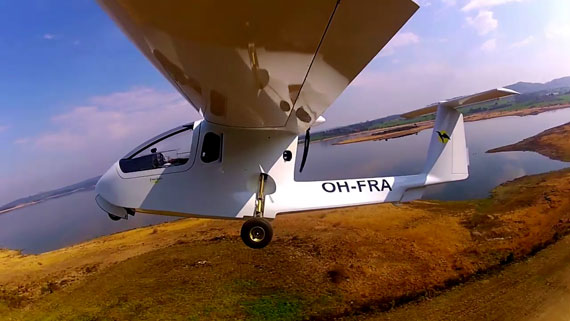
TK-AVIATION “EAGLE EYE III”- LONG DISTANCE AMPHIBIOUS AIRCRAFT NIGHT, THERMAL, LONG DISTANCE VISION AND WITH EXTREME LOW FUEL USAGE AND RANGE OVER 1,500 KM PER FLIGHT.
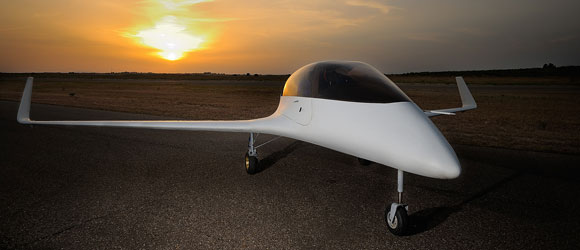
VIPER BLACK NIGHT VIPER HIGH SPEED SURVEILLANCE AIRBORNE PLATFORM
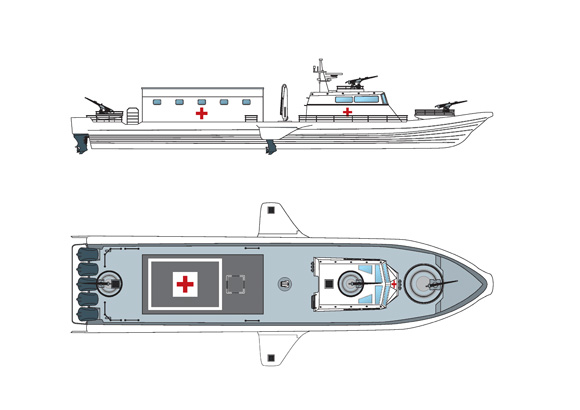
TK-MARITIME-“KING SHARK XI”- SEARCH & RESCUE/MEDICAL SEA-COASTAL-RIVER VESSEL WITH HELIPAD OPERATIONS, MEDICAL ASSISTANCE AND LONG RANGE CAPACITY.
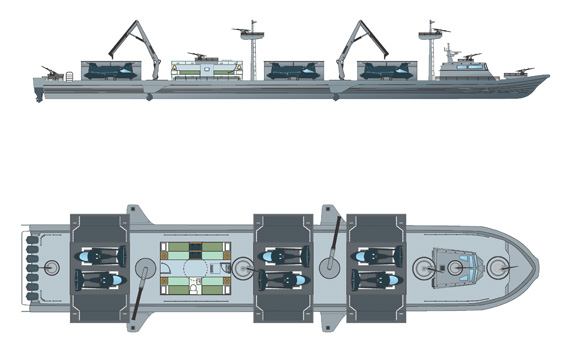
TK-MARITIME” KING KILLER WHALE” VERSION- MEDICAL/SEARCH & RESCUE OPTIONS, HELIPORT, HELIPAD, AIRCRAFT CARRIER, SAR EQUIPMENT CARRIER, PERSONNEL & MEDICAL QUARTERS, INTER-VESSEL DOCKING TECHNOLOGY FOR REFUELLING, LOGISTICS, MEDICAL, HUMANITERIAN TRANSFER OPTIONS BY AIR, SEA OR LAND AT TERRESTRIAL, RIVER, COASTAL OR SEA LOCATIONS.
SAR- Search & Rescue Operations at Transport , Industrial, Commercial, Terrorism, Civil Unrest, War, Sabotage, Climatic Incidents, etc.
Rescue comprises responsive operations that usually involve the saving of life, or prevention of injury during an incident or dangerous situation.

Tools used might include search and rescue dogs, mounted search and rescue horses, helicopters, the "jaws of life", and other hydraulic cutting and spreading tools used to extricate individuals from wrecked vehicles.

Rescue operations are sometimes supported by special vehicles such as fire department's or EMS heavy rescue vehicle.

All terrain SAR Services from city centers to deserts, jungles or even battle zones.

SAR-Anti-Chemical, Anti-BOC Protection Technologies
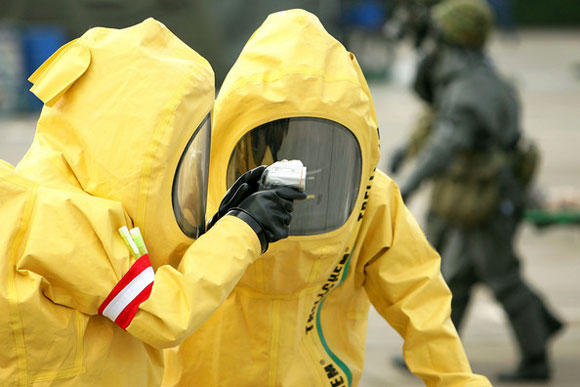
SAR-Biological Terrorism Attacks

SAR-River, Coastal, Lake, Ponds, Sea, Water Based Search & Rescue Operations.

SAR-Fire, Explosion, Sabotage, Terrorism Fire Based Operations.

SAR- Climatic, Environmental, Accidental Fire Related Incidents.



SAR-Elite Black Night Viper Search & Rescue Services
Equipment, Products, Technologies and Full Training Packs
Search & Rescue Products, Technologies, Training, Industrial, Military, Naval, Medical and Servicing Programs,
Booster Pumps

Cartridges & Filters

Cascade Systems

Compressors

Control Panels

Fill Stations

Fittings & Accessories

Mobile Equipment

Monitors & Purifiers

Oxygen Equipment

TK-SAR Meditech Rescue Equipment

Cylinders

Thermal Imaging Cameras

Services

Safety Equipment Inspections
As important as it is to choose the proper safety equipment for your vessel, it's equally important to properly maintain it. Let the experts at TK-Maritime ensure that your equipment will operate properly when you need it most. We have an experienced team of factory trained and certified technicians ready to perform whatever services your gear requires.
- Life Raft Inspections
- Inflatable Boat Repair & Warranty Station
- Inflatable Devices
- EPIRB Service & Registration
- Pickup & Delivery
SAR-Safety Training

TK-Maritime & Elite Black Night Viper Search & Rescue Services offers various training opportunities but they all have one thing in common — HANDS ON TRAINING.

We believe the best experience for our customers and friends is to actually use safety equipment which you hope you'll never need.

This means that our trainers will give you an opportunity for:
- Fighting A Fire
- Flare Deployment
- In Water Life Raft Exercises
- In Water PFD And Hypothermia
- Communications

Training Certifications For:
- Scuba Instructors
- PADI
- Safety At Sea / ISAF Certificates
- Commercial Fishermen
- Yacht Clubs
- Fishing Clubs
- Tug Captains and Mates
- Private Mega yachts crews
- Law Enforcement
- Naval
- Military
- Medical
- Border Control.
- Off-Shore Platforms
Basic Search and Rescue Skills
(Commonly presented in a 2 to 5 day course)

Course Overview and Background
SAR management and SAR field response has changed greatly in the past few years. Searches no longer last for days or weeks. Usually they are over in 24 to 48 hours. This Course and Handbook recognizes these changes and focuses on current SAR field “best practices” and techniques.
The Course and Handbook were crafted to provide
Guidance to SAR field responders on the best practices and techniques to use and is designed to be used by both new SAR field responders and experienced SAR field and management personnel.
Information about the duties and tasks of SAR field responders.
Current information on SAR field responder clothing, equipment, and how to best utilize these items.
Details on the latest search techniques, what methods work best, how to search in the field, and how to get the best results during a search.
Information on SAR specialties such as tracking, survival, emergency medical care, and subject packaging and transport.
Course Content
- Introduction: SAR Overview; Getting Involved with SAR
- Outdoor Skills, Equipment: Fitness for SAR; Clothing; Outdoor/SAR Equipment; Field Health and Hygiene; Navigation; Foot Travel; Environmental Hazards in SAR; Animal, Insect, Snake Hazards; First Aid.
- Search: Search Management Crucials; Search Area / Confinement; Lost Person Behavior; Search Tactics and Resources; Search Principles and Techniques (How to Search); Search Team Leader; Tracking; Inland Water Search; Evidence Handling.
- Rescue: Rope Rescue Equipment; Rope Knots and Skills; Rescue and Evacuation Survival: Survival (Body Management); Short Term Survival Skills.
- Other Topics (Addendums): Callout / Check-In; Check Out, Post Mission; Critical Incident Stress; Communications; SAR Technology; Helicopter Operations; Air Observer Guidelines; Cold Weather Nutrition; Hypothermia; Snowmobile/Winter SAR; SAR Transportation; Mountain Bike SAR; Search Management Actions; ICS Orientation; Legal Aspects; Urban Search; PSAR; Basic SAR Skills Benchmarks.
Search Team Leadership Skills
How to Search and How to Lead a Search Team
(Commonly presented as a 2 or 3 day course.)

Course Overview and Background:
Searching is the primary activity in search and rescue (SAR) in that a missing person has to be found before a rescue may be carried out. Not uncommonly, searching is time consuming and may be boring and frustrating. High quality searching requires a variety of skills beyond the basic ones needed for effective work in the environment being searched. Attainment of these skills can reduce frustration and make the act of searching more meaningful.
Search success is dependent upon a combination of search field skills, search field leadership and search planning. The totality of a search requires that all parts are carried out properly for the benefit of the missing person and the satisfaction of all those involved in the operation.
This Course and Workbook Are Concerned with Search Field Skills – “How to Search”.
It is not concerned with management and planning which are properly left to other courses. The skills being considered include:
Skills for the individual – these are the skills needed in order to be able to perform effectively as a member of a search party. They include Techniques of Observation, Terrain Analysis in the Field, Field Sketching and recording what has been seen and found.
Search Team Leader skills – these are the skills needed in order to be able to perform as a leader of a search team. They include the individual skills outlined above plus leadership skills. Understanding the "Six Step Process" is desirable as is an appreciation of how the style of searching relates to the current phase on the operation.
Leadership is required at all levels in the process of bringing a search to a satisfactory conclusion. The format of this course must be considered as “Work in Progress” and further developments are to be expected in the not too distant future. It would seem that, over the past 25 years or so, much effort has been expended on search management and search planning. Search Field Skills have been largely neglected or given relatively little attention. This Course attempts to consider the skills that impact on “How to Search” and the levels of leadership necessary to ensure that the quality of field work is enhanced.
Course Objectives:
- Development of ideas; sharing of information.
- Define terms and concepts.
- Identify Search Team (Party) Leader competencies.
- Applying the practically of leadership.
- Identify individual searcher skills (how to look).
- Identify Team Leader decision making process and tools.
- How to select Team Leaders – Benchmarks.
Course Content:
Team Leader Job, Duties, Responsibilities; Search Tactics; Search Skills (Quality Assurance of Searching); Investigative Skills; Documentation Skills; Communication Skills; Evidence Recognition, Protection Skills; Brief and Debrief Skills; Team Leader Decision Making: Use of The “Six Steps”; Search Team Leaders Roles and Responsibilities While Executing Type 1, 2, 3, Or 4 Techniques; Monitoring Well-Being of Team Members Skills; Leadership Skills; Tactical Decision Games-Scenarios and Use of The Six Step Process.
Search Management Systems (SMS)

Course rationale:
This 24 hour seminar (with optional 8 hour field lab) is based on the philosophy that all searches have a common beginning. This initial response phase might last several hours to several days. Characteristics of the phase include an emphasis on hasty searching and investigation, relatively small number of resources and agencies, a limited overhead staff, and a loosely defined search area. But regardless of how large or complex a search ends up being, the actions that should be taken in the beginning are identical, and crucial to success. Effective initial actions maximize subject survivability and detection, minimize the number of incidents that grow into costly large searches, and establish a firm foundation for those incidents that unavoidably become expanded response. Search Management Systems thoroughly explains appropriate actions to take in the initial response phase; and it also describes the role and function of the incident commander, regardless of incident complexity.
Overview
Example of typical course Agenda,
Day 1,
- 1. Incident Briefing and Pre-test
- 2. Course Philosophy and Purpose
- 3. The Evolution of Search Management
- 4. Initial Response Characteristics
- 5. Incident Response Process
- 6. Incident Management Principles
- 7. Search Crucials
- 8. Search Resources
- 9. First Notice Actions
- 10. Lost Subject Behavior Profiling
Day 2,
- 11. Defining Goals, Objectives, Tasks, and Assignments
- 12. Initial Response Tactics
- 13. Risk Management
- 14. Identifying and Prioritizing Appropriate Actions (see example)
- 15. Defining the Search Area (see example below)
- 16. Resource Activation
- 17. Demobilization Planning
- 18. Information Management, Briefing, Debriefing
- 19. Incident Action Plan, Searcher Preparedness
- 20. Incident Commander Responsibilities
- 21. Stakeholders and Critical Allies
- 22. Transfer of Command
- 23. After-Action Tasks
Day 3,
- 24. Course Exercise
- 25. POA Consensus
- 26. The Planning Meeting Process (one act play of a Planning Meeting using student actors)
- 27. Suspension Process
- Course Critique
- Final Exam
UNIT1. Course Philosophy and Purpose

COURSE OBJECTIVES:
At the completion of this search and rescue training, you will be able to:
- Appropriately initiate a search incident for a missing person.
- Apply the Incident Response Process to form effective decisions.
- Effectively manage a search incident through the initial response phase.
- Anticipate and manage changes in incident complexity.
- Establish the foundation for effective management of an expanded response incident.
- Transition to a relief incident commander or incident command team.
COURSE PHILOSOPHY:
Most searches are resolved in hours rather than days, with the remaining small percentage expanding into multi-day events.
Unit 13. Identifying & Prioritizing Appropriate Actions

INTRODUCTION
Now that you’ve obtained fundamental information regarding the nature of the incident, have determined urgency, understand the application of resources, and can predict likely subject behavior, the next step is to determine what actions are justified. This unit explores the steps to take in determining appropriate actions, including scenario analysis, prioritizing alternatives, classifying by mobility and responsiveness.
UNIT OBJECTIVES
At the conclusion of this search and rescue training unit, you will be able to:
- Demonstrate the ability to identify and prioritize situations that may have caused a subject to become missing.
- Recognize the value of using scenario analysis to determine resource needs and appropriate search actions.
- Understand the purpose, and process, for classifying by mobility and responsiveness.
Unit 14.
UNIT OBJECTIVES
At the conclusion of this search and rescue training unit, you will be able to:
1. Utilize travel aids, travel barriers, and passages to define and confine a search area having a high POA (Probability of Area)
UNIT GLOSSARY
Travel aid: Natural and human-made features facilitating the subject’s direction of movement.
Travel Barrier: Natural and human-made features impeding or deflecting the subject’s direction of movement.
Passages: Convergence of travel aids and/or barriers.
INTRODUCTION
So far we’ve explored critical reporting party information, appropriate responses, determining urgency, and through scenario analysis identifying high priority task and the resources to accomplish these task.
Unit 13 focused on situations where the subject might be injured or otherwise in need of immediate assistance, and perhaps of limited mobility. This unit focuses on situations where defining and containing the search area is desirable because the subject maybe mobile.
A review of the original theory for determining where to search will be helpful for understanding the procedures recommended in this workbooks. That theory was introduces in the original Managing the Search Function (MSF) course and was subsequently adopted in successor courses.
Defining the Search area in the search and rescue training SMS course advocates the methodology explained as superior to the MSF, and successor courses, process in that it defines a reasonably sized search area confinement effectively minimizing area expansion.
Select one member of the team to be Incident Commander. The role of this person is to keep the process moving, and to make decisions when the group isn’t reaching consensus. Organize. Delegate responsibilities, and share information. Don’t get bogged down (remember Jane may need assistance).
1. Begin developing a missing subject profile using the “Missing Subject Profile Worksheet” in your workbook.
2. Determine the urgency by completing the “Urgency Determination Worksheet”.
3. Identify and prioritize scenarios that might have caused Jan’s loss, and her possible subsequent activities, by completing the “Scenario Worksheet”. Develop a minimum of 5 scenarios.
4. Consider and prepare for possible contingencies.
5. Develop goal(s), objectives, and tasks for this incident. Prioritize the strategies, and determine the number and types of resources needed to accomplish these strategies. Record the information by completing the “IAP Worksheet”.
6. Define the search area and establish confinement following the below steps, and with these assumptions:
- a. Identify and calculate travel distances from the IPP for each travel aid and selected cross-country routes.
- b. Delineate the theoretical search area’s boundary by connecting the end points of the plotted distance.
- c. Identify passages and select key ones for confinement, preferably within the theoretical search area.
- d. Sweep travel routes toward the IPP and establish confinement at the chosen passages.
7. You have 40 minutes to complete this search and rescue training exercise.
SMS PRACTICUM
(Commonly presented as a 1 day course)
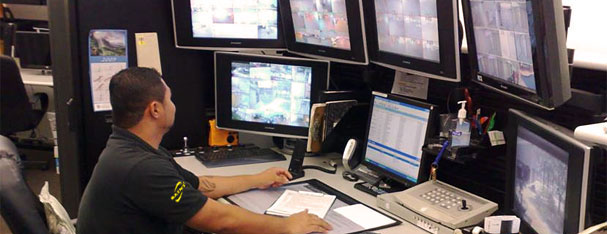
Goodman and Associates announce a new follow-on course to the popular Search Management System (SMS) course. SMS PRACTICUM is an eight-hour seminar utilizing case studies to explore and reinforce the Search Management System (SMS) course principles. Designed to refresh and update SMS course graduates (see below for description of the SMS course).
The SMS PRACTICUM incorporate all the concepts taught in SMS, but from an application – not lecture, rather perspective. The course starts with using SCORPA as the initial report. SCORPA and the Field Notebook for the initialresponse.
Using another student’s Field Notebook (mimicking passing on the Field Notebook to the next IC) to develop the Initial Action Plan (IAP) for the 2nd Operational Period including and the use of the ICS-202. No handouts of clue information will be handed out (the instructor will give all clues verbally and by PPT). The students will have to record all clues in the Unit Log section of their Field Notebook. Later in the course the students will develop a complete large incident IAP including using an ICS-215.
In the final exercise (10 day search) the class will develop Probability Of Area (POA) as well as manage operational periods IAPs. Information to help the attendees develop the IAPs will be given by the instructor. Each team will be given all clues found during the just ending operational period. This will prevent the students from reacting to clues; however, it will be using the clues to develop objectives and assignments for the next period.
Field Notebooks, ICS forms, etc., will be included as well as laminated maps used during the exercises.
Search Management for the Initial Response Incident Commander
(Presented as a 2- or 3-day SOP & checklist driven management course.)

Course rationale and background:
Most SAR missions are received by personnel who have little or no background/knowledge of SAR, yet because they are the responsible agency, they must begin actions. We have developed a "best practices" SOP (6 steps) and field guide that leads the course participant through the "must do" tasks for the first operational period (0 to 24 hours).
This course is based on the philosophy that all searches, whether short or long term, have a common beginning, called the "initial response phase." Regardless of how large or complex a search ends up being, the management of the initial response phase is identical; and crucial to its success.
This "initial attack" course introduces concepts, but uses no numbers or math calculations. Surveys conducted in the US, UK and Canada show that most missions are resolved within 24 hours (70 to 80% of the time). This course focuses on the first operational period.
This course and text focuses on the management of the initial response, and is designed to provide a clear, systematic, practical approach. The course materials do not dwell on theory or discussion of different and sometimes conflicting concepts. The materials are designed for the search practitioner (the deputy sheriff, park ranger, police officer, fire department officer, search team leader) whose primary concern is what to do when acting on a report of a lost person. This course also recognizes that it is impossible to predict when a search will grow into a major incident, and therefore includes actions to take so as to establish a firm foundation and a smooth transition should an expanded response become necessary. All procedures and techniques in these courses are field proven and current.
NOTE: A 2-day advanced course focuses on the "second operational period and beyond." The advanced course focuses on the incident action planning process that usually begins as the mission continues and more experienced/knowledgeable personnel arrive to run the show. This course educates participants on all the latest in search theory and tactics. The basic course is SOP driven, and the advance course is process driven.
Course purpose
- To give the participants enough training and experience (through table tops) to conduct a search mission immediately using a “best practices” standard operating procedure (SOP) 6 step process.
- Provide an orientation on both Search and Rescue management concepts, with emphasis on the basic concepts that will assist the participant in the planning of the “initial response” operational period.
- Orientation to the Incident Command System (ICS) and “initial response” procedures.
- Development of an “initial response” SOP.
Objectives, upon completion, a participant should be able to:
- Manage a search (first operational period).
- List the “Crucials” of search management.
- Explain the value of a SAR Hazard Vulnerability Assessment (HVA).
- List components of an effective SAR program.
- Apply incident management principles (use of ICS).
- Apply the 6-step incident response process.
- Identify, apply, discuss search management principles (essential fundamentals).
- Initiate an effective and appropriate response to a missing person report.
- Apply initial response resources in a SAR map exercise.
- Anticipate and manage changes in incident complexity (or be able to set stage for multiple operational periods).
- Manage crucial search management information.
Course content:
- Search Management Philosophy, Crucials, Concepts.
- Components Of An Effective SAR Program (Local SAR Capability Assessment for Readiness): SAR program development and management.
- Incident Command System (ICS).
- SAR Mission Overview (Anatomy of a Search).
- First Notice.
- Initial Response (SOP Driven).
- Search Area Identification (Probability of Area). Where to Search: Discussion of the Process and Basic Principles to Establish the Search Area.
- Search Tactics (Probability of Detection).
- Search Methods and Probability of Detection.
- Extended Operations Overview: How To Set The Stage.
- Rescue / Recovery Operations.
- Stakeholders and Critical Allies (External Influences).
- Mission Termination.
- Post Mission.
Urban Search Management for the Initial Response Incident Commander
(Commonly presented as a 2 or 3 day course)

Course purpose and background:
Managing urban search and rescue operations can be amongst the most difficult and challenging Search and Rescue (SAR) tasks the experienced Incident Commander may ever be asked to undertake. Yet, no text or course has previously existed that focuses and adapts the principles of wilderness/rural search management on the urban situation.
Though the general Search principles that we have learned for the wilderness setting will generally apply to the urban area, specific procedures used during most wilderness SAR operations will not directly apply to the typical urban SAR incident. The wilderness procedures for containment, travel aides, subject behavior and geographical barriers do not readily translate into workable techniques for the urban SAR incident.
Additionally, the urban environment of concrete and asphalt also adds a complexity to Urban Search planning. Travel distances are often much greater in the Urban setting. Travel on pavement is much easier than through fields and countryside. The presence of Rapid Transit Systems, Buses and Taxi Cabs make it possible for the missing individual to be out of the search area before the Search even gets started. Couple this with the significant possibility of potential criminal activity, and of large scale public involvement, and the incident can quickly expand into one that is very difficult to manage in an organized and effective manner.
The purpose of this course and text is to address urban search. It is based on the rural/wilderness oriented “Search Management for the Initial Response Incident Commander” text and course and has been developed and written by a panel of urban search management practitioners. This text and course utilizes “the Six Step Process,” a recognized approach to tackling an operational problem. It specifies a sequence of steps to take from the point at which the problem first manifests itself up to the implementation of the action needed to resolve it.
As in the rural or wilderness setting, the initial response to the urban incident should also be rapid, protect the scene, provide a quick analysis and alert of the situation, and move to quickly confine the movement of the subject. (Remember, “search is an emergency.”) In this course you will learn that it is imperative that the “1000 foot rule” be observed on every search. The 1000 foot circle around the point last scene must be the first and most thoroughly searched segment (and the subject’s residence should be searched a number of times).
Course design:
- To give the participants enough training and experience (through table top exercises) to conduct an urban search mission immediately using a “best practices” SOP (6 Step Process).
- Provide an orientation on both urban search and rescue management concepts, with emphasis on the basic concepts that will assist the participant in the planning of the “initial response” operational period.
- Orientation to Incident Command System (ICS) and “initial response” procedures.
- Development of an urban search “initial response” Standard Operating Procedure (SOP).
Objectives, upon completion, a participant should be able to:
- Manage an urban search (first operational period).
- List the “crucials” of search management.
- Explain the value of and conduct an urban SAR Hazard Vulnerability Assessment (HVA).
- List components of an effective urban SAR program.
- Apply incident management principles (use of ICS).
- Apply the 6-step incident response process.
- Identify, apply, and discuss urban search management principles (essential fundamentals).
- Initiate an effective and appropriate response to a missing person report.
- Apply initial response resources in a SAR incident.
- Anticipate and manage changes in incident complexity (or be able to set stage for multiple operational periods).
- Manage crucial search management information.
Elite Black Night Viper Search & Rescue Program
SAR -Combat Military-Naval-Law Enforcement-Medical Pack










Technokontrol Certificates & Associations
Technokontrol Manufactures, Designs & Researches our safety products in the European Union at the highest possible International Accident,Health & Safety standards.
TechnoKontrol is a member of the NFPA
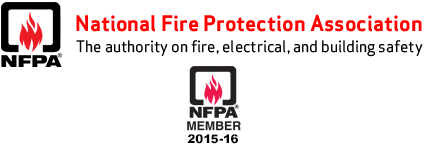
TechnoKontrol Products are ATEX Compliant
(European Antiexplosive Safety Directives)

Technokontrol's Products & Services are insured by

Certificates



































Elite Security Services
Eye of Osiris Project - Military Bunker Version
Products
What is B.L.E.V.E. explosion?
TechnoKontrol Wikipedia

TechnoKontrol: 1st in Spain for own Technology patents 2013 & 2014

- Ministerio de Industria Turismo y Comercio-OEPM
Technokontrol, the number 1 corporation in Spain filing for its own technology patents, trademarks and utility patents (SPA) - OEPM 2013 The year in numbers (SPA)
TechnoKontrol has been fully verified and certified by Bureau Veritas
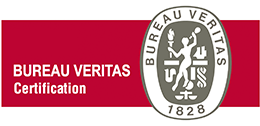
Certificates
- ISO 9001 - ES108784-1
- ISO 14001 - ES108782-1
- ISO 45001 - ES108783-1
- ISO 4126
- ISO 28000
- ISO 37000
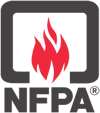
NFPA-National Fire Protection Association
NFPA-Asociación Nacional de Protección contra el fuego
TechnoKontrol is a member of the NFPA
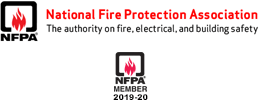
NFPA 69: Standard on Explosion Prevention Systems, 2016 Edition
Prevent deflagration explosions due to combustible dust particles, gases or vapors with NFPA 69. Combustible dust, gases and vapors produced in industrial settings can pose a significant safety hazard.NFPA 69: Standard on Explosion Prevention Systems offers definitive guidance on explosion protection and prevention systems.
ATEX - European Antiexplosive Safety Directives

- ATEX Guide: Protection in explosive atmospheres
- ATEX-EU/HAZLOZ-USA/NFPA-USA/DSEAR-UK/Explosion Directives TechnoKontrol Additional Anti-Explosion Data
- ATEX Directive in EU Directives
Dangerous Substances and Explosive Atmospheres Regulations - United Kingdom/ATEX

United Nations Economic Commission for Europe - UNECE - TechnoKontrol

- TechnoKontrol information for the UNECE BLEVE working group
Proposal transmitted by the governments of Spain and France
The European Parliament and The Council

Technokontrol's Products & Services are insured by

Dossiers TK Group of Companies
TK-Global Engineering - Where efficiency and reliability become a reality


BP World Report
Static Electricity Dangers and Protection
- Static Electric Discharge Hazard On Bulk Oil Tank Vessels
- Static Electricity - ISGINTT
- Dangers of static electricity and protection in aviation
- Static Electricity - IAPA
- U.S. Chemical Safety and Hazard Investigation Board
US Department of Transport
USA Chemical Safety Board
An independent federal agency investigating chemical accidents to protect workers, the public, and the environment.
About the CSB
CSB Safety Videos
- Chevron Richmond Refinery Explosion
- Deadly Contact
- West, Texas Real Live Blast Damage Video
- Hot Work - Dupont Explosion
- Static Sparks Explosion in Kansas
- Danger of Flammable Gas Accumulation
Articles
- Energy Sector Vulnerabilities: Petroleum (Spanish)
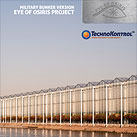
 Safety Products System
Safety Products System Eco-Energy Power Plants
Eco-Energy Power Plants TK Aviation
TK Aviation Environmental Industries
Environmental Industries Mining
Mining Petroleum Industry
Petroleum Industry Industrial Projects
Industrial Projects Maritime Industry
Maritime Industry Military Vehicles
Military Vehicles Transportation & Auto
Transportation & Auto Construction Industry
Construction Industry Global Food Industry
Global Food Industry Electronic Safety Systems
Electronic Safety Systems Housing Projects
Housing Projects